By Kelley Flint
On May 19th, the VAEEC held their semi-annual member meeting, where speakers and attendees discuss this year’s pertinent theme—Opportunities in the Midst of Change. Over 100+ advocates from diverse backgrounds were in attendance, representing businesses, utilities, nonprofits, national associations, local governments and state agencies. While our current political climate is uncertain, VAEEC’s members and additional advocates made it clear they’re committed to continuing the push for energy efficiency and solutions that move Virginia forward.

The registration table featured the latest VAEEC report.
As an intern for VAEEC and first-time attendee, it was empowering to hear the discussions that took place from people with expertise and experience in this growing field. The presentations, questions posed and answers given were reassurance that even amidst all the unknowns in the environmental and energy sectors, there are people dedicated to making a tangible impact in my home state.
Here’s a brief recap of what was on the agenda.
-Executive Director Chelsea Harnish kicked things off with an introduction to the meeting’s topics and summary of the goals for VAEEC’s future. In addition to discussing the direction of the organization, she laid out five policy recommendations that are part of a newly-released report, “Why Energy Efficiency is a Smart Investment for Virginia”.
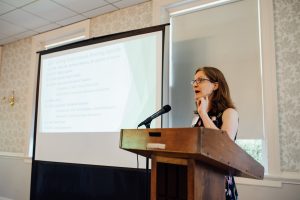
Executive Director Chelsea Harnish kicked off the spring meeting.
-Members then took turns sharing their success stories before splitting into groups for our first breakout sessions.
-In one room, Rich Dooley of Arlington County and Paul Brooks of Johnson Controls discussed Property Assessed Clean Energy (PACE) funding. The session focused on the development of PACE in Arlington, and how a local model can be used to fund energy efficient commercial buildings without taxpayer money. Paul Brooks also presented examples of PACE success in renovation projects and how PACE provides a financing solution to funding energy efficiency. The commercial PACE session was moderated by Abby Johnson from Atlantic PACE and Abacus Property Solutions.
-Meanwhile, the residential session took place next door and discussed the importance of Consistent Messaging. The speakers, Andy Farmer of Virginia Energy Sense and Casey Hollins of Rappahannock Electric Cooperative, emphasized outreach in communities and the variety of programs that can jump-start energy efficiency in the public. The residential consistent-messaging session was moderated by Jessica Greene from the Virginia Energy Efficiency Council.
-After lunch, the second round of breakout sessions included a presentation on New Commercial Technologies, led by Kristy Shoemaker of Trane and Greg Merritt of Cree Lighting. The presentation highlighted how rapidly evolving technology has created connections between devices, buildings and people that can be utilized to create more efficient energy use. Lighting technology was highlighted by Greg Merritt as an important advancement that reduces energy consumption by creating awareness of usage as well as reducing energy usage itself through technology changes. The commercial session on new technologies was moderated by John Morrill from Arlington County.
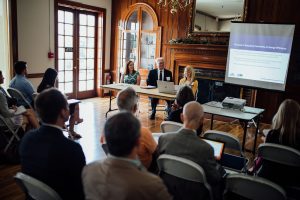
Panelists in the Sunroom discussed ways to address residential energy efficiency.
-At the same time as the commercial panel, Lauren Westmoreland of Southeast Energy Efficiency Alliance spoke about Building Codes. The session discussed how outdated codes prevent buildings from meeting efficient standards. Virginia is also in the middle of creating it’s 2015 building codes, and the juncture could be an opportunity to propel energy efficiency in Virginia. The residential session on building codes was moderated by Andrew Grigsby from the Local Energy Alliance Program.
-The final panel was led by Dan Bresette with the Alliance to Save Energy and Richard Caperton with Oracle. The panel discussed the Federal Implications for Energy Efficiency in Virginia and included an audience Q&A. The panel’s message highlighted that regardless of the direction the federal government takes, and the challenges budget cuts and policy changes may pose, Virginia has the opportunity to move forward with energy efficient solutions and pave the way for other states to follow. The final panel on federal implications in Virginia was moderated by Tom Nicholas from the City of Virginia Beach.
The full agenda can be found on the VAEEC website under Events. If you attended the event, please fill out this brief survey.
A special thanks to all of our event sponsors for making the Spring Meeting possible!
Venue Sponsor
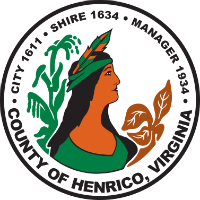
Partners of VAEEC

Friends of VAEEC
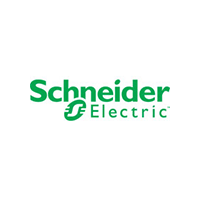



Industry Often in the Shadows Drives $1.5B in Revenue and 75,000 Jobs
Richmond, Virginia (May 19, 2017) — Virginia’s economy is stronger thanks to the role of energy efficiency, according to a new report released today by the Virginia Energy Efficiency Council (VAEEC) that finds the industry drives $1.5B in annual revenue and accounts for more than 75,000 jobs. The full report, “Why Energy Efficiency is a Smart Investment for Virginia,” is available at www.vaeec.org/data and was presented at the VAEEC spring meeting in Richmond. The report lays out five specific policy recommendations that will not only help the industry continue to grow but will also play a role in future carbon reduction strategies the Commonwealth may pursue.
“With uncertainty about the future of energy efficiency policies and resources at the federal level, it is more important than ever for states to recognize the enormous potential of energy efficiency to advance smart energy solutions,” said Chelsea Harnish, VAEEC Executive Director. “The VAEEC’s 80+ members prove to us everyday that energy efficiency has tremendous potential to drive economic growth, create jobs, shrink utility bills, conserve natural resources, and reduce pollution. Our report outlines an ambitious plan to tap that potential.”
In 2013, the VAEEC released the first-ever census report documenting the energy efficiency industry in the Commonwealth. Our newest report shows that revenue generated from the energy efficiency sector has grown from nearly $300 million in 2013 to $1.5 billion in 2016. The U.S. Department of Energy has found that the industry is responsible for 75,000 jobs across the state.
The report offers five policy recommendations, specifically addressed to the incoming Governor, deemed “the smartest, fastest, most effective routes we can take to put Virginia on the path toward a clean energy future and stronger economy.” They are:
- Expand utility energy efficiency program opportunities in Virginia
- Support the adoption of Commercial Property Assessed Clean Energy (C-PACE) financing across the Commonwealth
- Adopt rigorous energy building codes for new home construction without weakening amendments
- Expand performance-based contracting for state-owned buildings and public institutions of higher education
- Provide and support opportunities for benchmarking of state, local and commercial buildings
According to the most recent update to the Virginia Energy Plan, each of these policy recommendations are critical for Virginia to meet our energy efficiency goal of 10% electricity savings by 2022. The final report from the Executive Order 57 Working Group, which was released this week as well, also highlights the the important role energy efficiency can play in reducing carbon pollution. Two of the five recommendations made by the Working Group are specific to the energy efficiency industry: 1) Updating state building codes to reflect current technology and standards and 2) Developing an energy efficiency accounting and registry tool.
The report pairs each recommendation with a case study of that policy in action, including:
- Project:HOMES weatherized a veterans housing complex in Richmond through Dominion’s Energy Share program
- The Virginia Center for Housing Research at Virginia Tech found that multi-family apartments that were built to EarthCraft, above building code, standards saved families $650 a year.
- The Virginia Department of Corrections integrated Energy Performance Contracting into their building operations to cut costs
- A Property Assessed Clean Energy (PACE) financed project at a retirement community in neighboring Kentucky is expected to achieve 37% energy savings
- In Arlington County, commercial property owners participated in a voluntary benchmarking program competition, which resulted in millions of dollars in cost savings
“This report should open a dialogue among energy efficiency stakeholders, policymakers, regulators, businesses, and local and state government agencies about how best to augment the implementation of energy efficient technologies and services,” said David Steiner of D+R International and Chair of the VAEEC Board of Directors. “The many benefits to consumers, property owners, ratepayers, local and state governments, and industry warrant aggressive adoption of best practices to implement energy efficiency throughout the Commonwealth, from the kitchen electrical outlet to the power grid.”
Contact: Chelsea Harnish, VAEEC, 804.457.8619
This post originally appeared on the Virginia Multifamily Energy Efficiency Coalition website (May 16, 2017) and is reposted here with permission.
The Board of the Department of Housing and Community Development held a public hearing on Monday, May 15th to hear public comments on the proposed changes to the statewide building code. A large group gathered before the board, including several MFEEC members, to present their comments on the energy efficiency regulation changes that would bring Virginia’s Building Code up to date with the 2015 International Energy Conservation Code (IECC). Those who convened included home builders, energy efficiency advocates, consumer advocates, energy auditors, and HERS raters.
Nearly everyone who convened in support of increased energy efficiency in the building code highlighted the importance of blower door and duct blaster testing, opining that the visual inspection option for duct and building envelope tightness testing should to be done away with. Their message was simple: you cannot, with confidence, visually see an air leak in a building or its duct systems.
Mike Hogan, of Edge Energy commented that of all the homes that he tests, 60 percent fail the blower door test the first time. According to Katie Henderson of Efficient Homes, ducts tested after drywall has been installed fail by a shocking 96 percent, (when they are first tested after construction is complete). Others made the case that testing to make sure leakage standards are met is not only cost-effective for energy usage, but can also guard against costly repairs sometimes needed a few years into the building’s life that can result from moisture problems caused by duct leakage and condensation in walls. On a simpler level, ducts that fail mechanical testing after drywall has already been installed require a great deal of effort to fix.
While highlighting the number of tightness tests that fail on the first time, Benjamin Knopf of Think Little Energy made sure to emphasize to the Board that there are also many builders they work with who routinely achieve building tightness of .5 air changes per hour or less than 1% duct leakage, stressing that these standards are readily achievable with the right training and building practices, a conclusion supported by their handout (05161700) on the results of homes they’ve tested since 2015.
Zack Miller testified on behalf of the MFEEC and the Virginia Housing Alliance sharing data from Virginia Tech’s Center for Housing Research that shows that Low Income Housing Tax Credit affordable apartments in Virginia built to the EarthCraft building standard consumed 40 percent less energy than code built construction and saved the average tenant almost $600 a year in utility costs. He also shared the results of a UNC Center for Community Capital Study that found a 32% lower risk for mortgage default in Energy Star homes to stress the benefits of efficient construction to both renters and homeowners.
A comment brought forward by Casey Murphy of Pearl Certification, was that leaky ducts inside a home can pull contaminants from the attic into the air system, negatively impacting the overall health and safety of the building’s occupants. Protecting the health, safety and welfare of the Commonwealth’s residents is written into the code as many providing testimony emphasized to the Board members.
Dana Wiggins of the Virginia Poverty Law Center, a consumer advocate, said that for low-income households, concerns are always centered around monthly costs for the end-users. For low-income home-owners, or soon to be home-owners, energy costs matter, and consumers need to know if they will be able to afford to maintain the home. High or unpredictable energy costs can put those homeowners at risk for keeping their homes.
Chelsea Harnish, Executive Director of the Virginia Energy Efficiency Council spoke in support of the proposal being considered by the energy sub-workgroup that would drop many of the proposed amendments on mandatory blower door testing, R-49 attic insulation and other measures included in the 2015 IECC and instead adopt an optional compliance pathway for builders to comply with the 2018 Energy Rating Index (ERI) if they choose. Under the proposed compromise, all newly built homes regardless of compliance pathway would be required to pass mandatory duck leakage testing at 4% for ducts outside of conditioned space. This testing could be be certified by the HVAC contractor that installed the system. Chelsea noted in her support for this proposal that 2018 ERI pathway sets the maximum allowable score at 62 instead of 54 as prescribed by the 2015 IECC, which would be more flexible and achievable for homebuilders in the state.
Mike Toalson representing the Homebuilders Association of Virginia spoke about the importance of the industry on Virginia’s economy and argued that the Board should not adopt code changes that could depress homebuilding while speaking for his support of the ERI compromise proposal. Some efficiency advocates mentioned support for the compromise, while many others who testified urged the board to adopt the 2015 IECC in full, without amendments.
A big thanks to our members Chelsea Harnish, Andrew Grigsby, Katie Henderson, Dana Wiggins, and Zack Miller for speaking in favor of increased energy efficiency in Virginia’s uniform state building code!
Written public comment will be accepted by the Department of Housing and Community Development through May 21st here. The new iteration of the code will be adopted by the BHCD sometime this fall and after it is approved by the governor’s office, it will go into effect next year.
Back in the summer of 2016, Governor McAuliffe signed Executive Order 57 (EO57), an initiative to reduce the Commonwealth’s carbon emissions. This Order established a workgroup to recommend concrete steps to reduce carbon emissions from Virginia’s electric power generation facilities, which account for roughly 30% of our total carbon emissions. Earlier this year, the workgroup was soliciting comments from the public on ways to cut Virginia’s carbon emissions from this sector.
The VAEEC supports EO57’s attempt to reduce the Commonwealth’s carbon emissions and has been actively engaged throughout this process. For example, Chelsea Harnish and Board member Andrew Grigsby gave a presentation to the workgroup at a meeting on building codes in January of this year. Currently, the VAEEC is focused on several program areas which reflect our role in advancing innovative and effective strategies in the energy efficiency field: supporting smart energy efficiency policies and programs through the Governor’s Executive Committee on Energy Efficiency, or GEC; Property Assessed Clean Energy financing, or PACE; and pushing for more rigorous energy codes in the Virginia Uniform Statewide Building Code, or USBC.
Thus, it made total sense for us to seize the opportunity to publicly comment on the importance of energy efficiency.
The VAEEC’s comments were carefully crafted to encourage the EO57 workgroup to include energy efficiency as part of the Commonwealth’s compliance plan to reduce carbon pollutions from the electric sector. After all, energy efficiency is one of the most practical, cost-effective tools to reduce our energy consumption and dependency on fossil fuels, which in turn, helps mitigate climate change. Furthermore, energy efficiency is a $1.5B industry in Virginia that supports more than 75,000 jobs. Therefore, we recommended that the EO57 workgroup include energy efficiency as a viable option for reducing carbon pollution from power plants.
Additionally, our comments encouraged the EO57 workgroup, and all Secretariats and state agencies represented by members of the workgroup, to become more actively engaged in the utility proceedings before the State Corporation Commission. These proceedings provide an opportunity to interject different perspectives into these conversations including from those who are charged with protecting consumers from paying higher-than necessary energy bills and agencies tracking our air quality and/or progress toward meeting Virginia’s voluntary energy reduction goal.
Energy efficiency is a practical, cost-effective tool that reduces energy consumption and carbon pollution, saves money on utility bills, creates jobs, and positively contributes to Virginia’s economy. The VAEEC will continue to work hard to advance energy efficiency across the Commonwealth, and we hope that the EO57 workgroup will recognize the value and opportunities energy efficiency offers.
VAEEC’s full comments submitted to the Executive Order 57 workgroup can be found here.
The Richmond Times-Dispatch just ran a story, “Will Virginia forge its own path on carbon regulation,” about the EO57 process which you can read here.
Christiansburg-based Community Housing Partners or CHP — VAEEC Business Gold member and May Featured Member of the Month — operates a vast portfolio of programs and services in the realm on energy efficient buildings here in Virginia, across the country and in Latin America. In recent years CHP has really made a name for itself by providing top-notch trainings in energy and conservation practices, weatherization and green building.
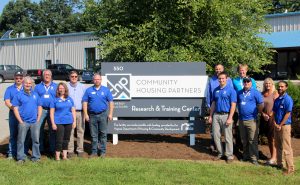 One of their premier trainings is the CHP Builders’ Boot Camp which will be offered again August 30-31, 2017.
One of their premier trainings is the CHP Builders’ Boot Camp which will be offered again August 30-31, 2017.
This is an intensive, interactive, and collaborative learning workshop experience for construction industry professionals located at the CHP Training Center in Christiansburg. Held periodically throughout the year, Builders’ Boot Camp equips participants with the most current construction industry information and skills needed to maintain an edge in the business and provide the highest quality services to their clients.
CHP’s experienced team of BPI, RESNET, and EARTHCRAFT-certified 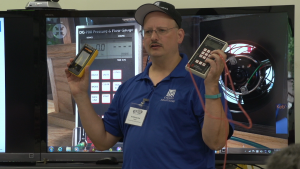 trainers provide trainings that focus on home performance using a whole-house approach, with the goal of creating single and multifamily homes that are good for people, good for the environment, and good for business. Technicians are taught practices and techniques that test and reduce energy consumption, address health and safety concerns, and determine how the building shell, appliances, and occupants interact with one another. Detailed curricula, hands-on exercises and innovative models support these training efforts.
trainers provide trainings that focus on home performance using a whole-house approach, with the goal of creating single and multifamily homes that are good for people, good for the environment, and good for business. Technicians are taught practices and techniques that test and reduce energy consumption, address health and safety concerns, and determine how the building shell, appliances, and occupants interact with one another. Detailed curricula, hands-on exercises and innovative models support these training efforts.
Speakers lined up this year’s Builders’ Boot Camp come from all over the country and have each been in the building science industry for at least 20 years, including:
- Allison Bailes (Teaching a session on HVAC performance and design)
- Paul Francisco (Indoor air quality, health and building performance)
- Dick Kornbluth (Ensuring quality workmanship with your contracting business to reduce cost and increase profits)
- Anthony Cox (Moisture management and diagnostics)
At a time when studies and surveys show rising demand for energy efficient homes, Builders’ Boot Camp is the all-in-one training for builders wanting to acquire or refresh their knowledge and skills.
You can watch a video overview of their Builders’ Boot Camp, learn more about CHP and their trainings, and register here.
Are you trying to keep up with the latest on energy policy at the federal level? Thinking through the implications these policies will have for Virginia, your company or organization? So are we.
Here are a couple of updates and ways to stay engaged.
- Join us May 19 at our Spring Meeting. The theme is “Opportunities in the Midst of Change” with a panel on the implications of federal policy here in the Commonwealth.
- There is still time to sign on to a letter led by VAEEC member E4TheFuture urging Congress to continue support for residential energy efficiency. The deadline to sign was extended to April 21.
- The Alliance to Save Energy has an active online petition where you (and your members/customers) can voice support for the ENERGY STAR program.
- Get an update on energy efficiency legislation winding its way through the House and Senate.
- Keep sharing the good news. Preliminary results from the 2016 Virginia Clean Energy Census indicate that building energy efficiency alone accounts for $1.1B in annual revenue. We recently found this great infographic from the International Energy Agency showing the multiple benefits of energy efficiency improvements.
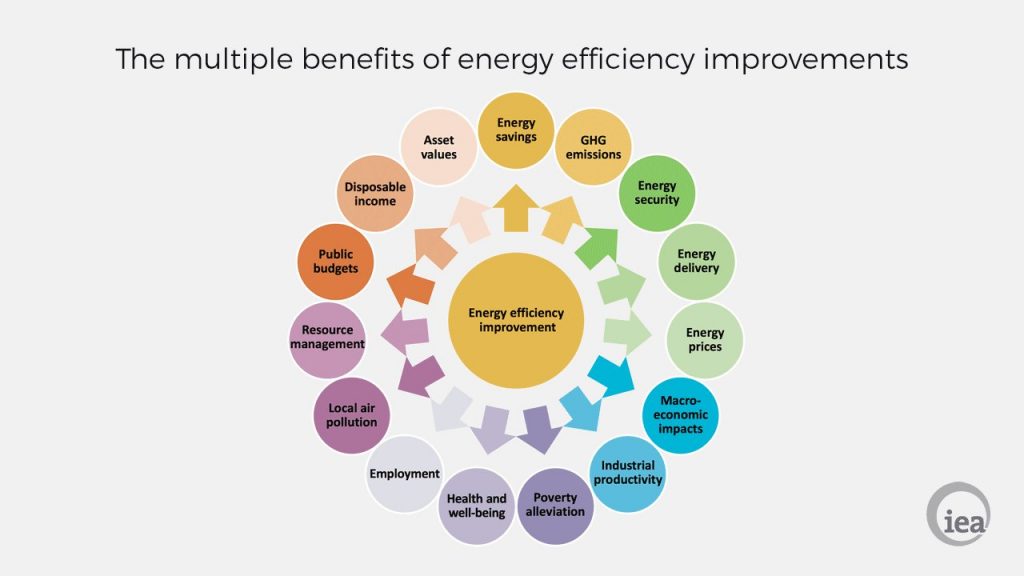
If your company or organization has a story to tell that — anecdotally or via data and research — underscores the importance and effectiveness of energy efficiency, please share it with us!
- Grab your coffee and skim through the recent news coverage and analysis. We’ve pulled some of the highlights here:
“In Virginia, the Trump effect on environment is beginning to come into focus.” (Virginian-Pilot, April 3): “The new president already had signaled in his budget blueprint delivered to Congress two weeks before that he will try to back up his campaign promises to roll back environmental regulations, which he has described as job-killing and onerous. The Environmental Protection Agency’s budget would be slashed by 31 percent next fiscal year. Environmental programs in numerous other agencies – from the Agriculture Department to NASA – would be chopped as well.”
“ENERGY STAR labels are seen as a cheap way to improve efficiency. Why does Trump want to kill them?” (Los Angeles Times, April 12) “Commercial real estate giant CBRE is always on alert for shifts in federal government policy that might impact its vast property management and investment business. But the Los Angeles-based Fortune 500 company never anticipated an effort to eliminate a voluntary, cost-effective initiative that has saved its customers millions of dollars and had almost no critics…’Never in my wildest thoughts have I considered something like this,’ said Dave Pogue, who leads the sustainability efforts at CBRE. He said the program helped the firm cut energy use at its properties by 16% over the last decade.
“Your fridge may be Washington’s next regulatory-rollback target” (Bloomberg News, April 12): “Appliance makers want Congress to ease energy efficiency standards that they say are unrealistic and costly for air conditioners, refrigerators and other equipment — even allowing for future rollbacks. The industry is lobbying to amend a decades old conservation law that sets minimum efficiency standards for many household and commercial appliances and bars them from being weakened. Manufacturers say regulators should be required to negotiate requirements with them and that some set by the Obama administration are too costly and will drive up prices.”
“States take on Trump over energy efficiency.” (Reuters, April 3): “A coalition of U.S. states has mounted a broad legal challenge against what it called the Trump administration’s illegal suspension of rules to improve the energy efficiency of ceiling fans, portable air conditioners and other products.”
“As Trump bows out, states seek to fill void on climate change” (Bloomberg News, March 28): “In statehouses across the country, both Republican and Democratic leaders are using their own regulatory powers and budgets to fill a void being left by Trump, whose order Tuesday rolled back many of President Barack Obama’s expansive initiatives to combat global warming.”
“Trump wants to cut programs that help buildings save energy. This new study says they work.” (Washington Post, March 27): “A new study, out Monday in the journal Nature Energy, finds that “green” buildings in Los Angeles alone are avoiding about 145,000 metric tons in carbon dioxide equivalents each year. And there’s hope that efficiency programs in other cities may performing similarly well.”
“Trump aims deep cuts at energy agency that helped make solar power affordable” (Washington Post, March 31): “The Trump administration is aiming a half-billion-dollar cut at the main U.S. hub for renewable energy research — 25 percent of the agency’s budget, and that’s just for the final five months of this federal fiscal year. Even deeper cuts are expected to be sought for 2018 — a possibility that has alarmed researchers in clean energy and even some Republicans in Congress. The Office of Energy Efficiency and Renewable Energy, or EERE, is a $2 billion branch of the Department of Energy. It is credited with helping to drive the rapid expansion of rooftop solar panels, electric vehicle batteries, LED lighting and more…His proposed budget would cut previously uncontroversial energy efficiency programs, like the EPA’s Energy Star and the Weatherization Assistance Program (which EERE operates), and discard entirely innovative clean energy research programs like the Advanced Research Projects Agency-Energy, or ARPA-E, also part of the Energy Department.”
“New EPA documents reveal even deeper proposed cuts to staff and programs” (Washington Post, March 31): “The Environmental Protection Agency has issued a new, more detailed plan for laying off 25 percent of its employees and scrapping 56 programs ”
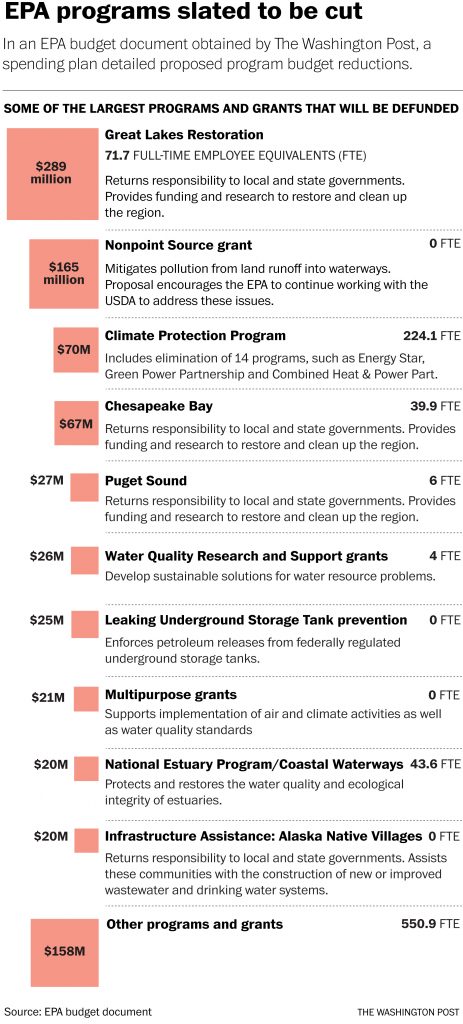
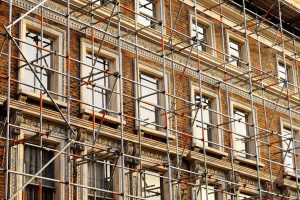 Property Assessed Clean Energy financing, or PACE, is starting to get more and more attention around the Commonwealth and the nation. In fact, Governor McAuliffe and his administration recognized PACE as a viable means to create more jobs, save energy, and lower electricity bills in a recent press release. As it’s popularity increases, many are still unaware of just exactly what PACE is and who it can benefit.
Property Assessed Clean Energy financing, or PACE, is starting to get more and more attention around the Commonwealth and the nation. In fact, Governor McAuliffe and his administration recognized PACE as a viable means to create more jobs, save energy, and lower electricity bills in a recent press release. As it’s popularity increases, many are still unaware of just exactly what PACE is and who it can benefit.
PACE financing is a loan program to help bring low-cost, long-term capital to fund the rehabilitation of existing and new privately owned commercial buildings through energy efficiency, renewable energy, and water conservation projects. The loan is repaid annually through the property’s real estate tax bill.
Thirty-three states and Washington, D.C. have passed legislation at the state level to enable PACE financing; nineteen of those states have already started a PACE program. In Virginia, a commercial PACE, or C-PACE, enabling law was originally enacted in 2009 and amended in 2015. Virginia’s PACE law requires a locality to develop a PACE program, and private lenders make the loan and negotiate directly with the property owner on rates and terms. Currently, Arlington County is the only Virginia jurisdiction actively developing a PACE program; however, several over localities are exploring the development of their own programs.
Practically all privately-owned commercial buildings, regardless of size, are eligible for PACE financing, including office, retail, hotel, and industrial space. Eligible PACE projects must either reduce energy consumption or generate energy, and they must be permanently affixed to the property. Eligible improvements include: insulation, solar panels, lighting, roofing, and HVAC systems. In Virginia, commercial, nonprofit, and multifamily buildings (except condos and dwellings with less than five units) are eligible regardless of their age.
PACE offers an array of benefits for each key stakeholder: property owner, contractor, lender, locality.
Property owners:
– 100% financing: PACE covers 100% of all hard and soft project costs, eliminating the need for upfront cash investment.
– Long-term loan: With terms up to 20+ years, PACE loans result in lower annual payments and immediate positive cash flow.
– Transferable: PACE loans do not have to be paid off at the time of sale; they transfer to the new owner.
– Non-accelerating loan
Contractors:
– Increase sales volume and improve profit margin: By covering 100% of project costs and eliminating the requirement for out-of-pocket expense, PACE brings financing to more customers. Since PACE is based on equity in the property and not personal credit, it is easier for more customers to obtain financing.
– Fund deeper energy retrofits: Long-term financing enables customers to take advantage of projects with longer paybacks, which leads to more comprehensive projects with greater effect on energy usage. PACE can also fund efficiency improvements that are not allowable uses of Weatherization Assistance Program funds (i.e. replacement windows).
– Gain support and resources: PACE programs can be developed to offer an array of contractor services to help grow business and streamline financing. Services include training, call center support, customizable marketing materials, tools to pre-qualify customers, project estimation calculators, and web portals for financial analysis and deal-tracking.
– Spur demand for retrofits and energy auditors: As the number of people taking advantage of PACE increases, PACE could spur a surge of private demand for well-trained retrofitters. Additionally, as the program grows, so will the demand for energy audits. Energy audits are used to track a building’s energy usage before and after PACE improvements are installed.
Lenders:
– Meet client’s needs of implementing upgrades
– Increase value of collateral: upgrades and improvements increases the value of the property
– Enhances property owner’s ability to pay their debt: raises net operating income (NOI) through low annual payments and decreased operating costs
Localities:
– Creates employment opportunities for contractors, trades, engineers, vendors, etc.
– Serves as a redevelopment tool for “tired” buildings with obsolescent and inefficient systems
– Improvements make buildings more marketable, leading to better tenant retention and increases property values
– Increased property taxes and construction fees yields more revenues for jurisdictions
– Reduces locality’s carbon footprint, enabling it to become a green leader
– Minimal municipal burden: a third party administrator carries the cost of starting and running the program
The difference between traditional bank financing and PACE financing:
| Traditional Bank Financing |
PACE Financing |
| Purpose: HVAC and Lighting |
Purpose: HVAC and Lighting |
| Project Cost: $100,000 |
Project Cost: $100,000 |
| Loan: $75,000
25% upfront cash investment required |
Loan: $100,000
$0 upfront cash investment required |
| Interest Rate: 5% |
Interest Rate: 6.25% |
| Term: 5 years, fully amortizing |
Term: 15 years, fully amortizing |
| Monthly Payment: $1,415 |
Monthly Payment: $857 |
| Annual Payment: $16,984 |
Annual Payment: $10,290 |
PACE financing is a lucrative tool that can benefit all parties involved. We look forward to seeing Arlington get their program up and running later this year and are excited to continue working with other localities as they explore the feasibility of developing their own PACE programs.
If you would like additional information about PACE, please contact VAEEC Program Coordinator Jessica Greene.
The roots of Rappahannock Electric Cooperative (REC) — VAEEC Business Gold member and April Featured Member of the Month — extend over almost 80 years, but there is nothing old fashioned about the way this electric utility serves its 161,000-plus connections in parts of 22 counties in Virginia. Unlike its members in the early days when electricity was new and exciting, today REC members expect electricity to be there when they need and want it. It powers their lives, the latest and greatest appliances and electronics and keeps life going almost effortlessly.
The 400 REC employees who work to deliver safe, affordable and reliable electricity to its members know that a lot of knowledge, time and work goes into exceeding their members’ expectations.
“Our employees ensure REC’s members are served using advanced technology and have access to a wealth of information to help them make the best decisions about how much electricity they use on a monthly basis,” explained David Koogler, vice president of member and external relations (and VAEEC Board member). “We do more than sell electricity. We provide value to our members.”
REC’s members request the ability to utilize environmentally friendly alternatives and access to tools that will help them reduce their energy consumption. The employees at REC make sure these systems are in place.
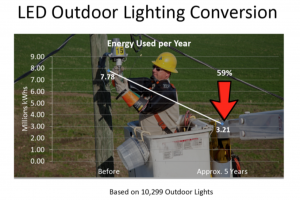 More than 10,000 REC members have either 175-watt mercury vapor lights or 100-watt high-pressure sodium lights at their residence or business. To help conserve energy and improve operational efficiency, when those lights need repairs REC is replacing them with energy-efficient 40-watt LED fixtures. Not only will these lights consume less energy, they require less maintenance and are dark sky friendly, allowing an unobscured view of the night sky while still providing a sense of security.
More than 10,000 REC members have either 175-watt mercury vapor lights or 100-watt high-pressure sodium lights at their residence or business. To help conserve energy and improve operational efficiency, when those lights need repairs REC is replacing them with energy-efficient 40-watt LED fixtures. Not only will these lights consume less energy, they require less maintenance and are dark sky friendly, allowing an unobscured view of the night sky while still providing a sense of security.
REC estimates all 10,000 residential-sized outdoor lights will be replaced over the next five years. This will help reduce energy use by 59 percent from 7.8 million kilowatt hours per year to 3.2 million kilowatt hours per year. The 4.6 million kWh saved is enough to supply 381 typical 1000 kWh per month homes for one year.
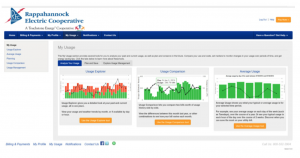 “Consideration of the environmental impact our industry has rounds out REC’s value equation,” added Koogler. “By offering energy efficient resources to members we are helping them take part in protecting our environment. We’re in the electricity business and today that means constantly promoting energy efficiency to our members.”
“Consideration of the environmental impact our industry has rounds out REC’s value equation,” added Koogler. “By offering energy efficient resources to members we are helping them take part in protecting our environment. We’re in the electricity business and today that means constantly promoting energy efficiency to our members.”
REC accomplishes this through community events, energy consultations, and short energy-tip videos shared online through their website and social media. Members also have access to tools to help them better manage their electric account. Because of the advanced metering infrastructure in place throughout REC’s service territory, all REC members have access to their hourly, daily, monthly and annual energy use data.
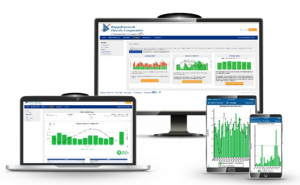 Koogler said, “Using the My Usage tool offered through REC’s MyREC SmartHub online account portal, members can log in to view this energy use data so they can identify the potential cause of spikes in energy use before they receive an unexpected high bill. They can also sign up to receive hourly or daily energy use notifications delivered by text and email.”
Koogler said, “Using the My Usage tool offered through REC’s MyREC SmartHub online account portal, members can log in to view this energy use data so they can identify the potential cause of spikes in energy use before they receive an unexpected high bill. They can also sign up to receive hourly or daily energy use notifications delivered by text and email.”
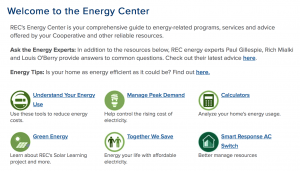 In addition to access to their energy use data online, REC also has energy experts who can answer members’ questions by phone or conduct in-person energy audits. These knowledgeable employees provide quality information for members who want to implement energy-saving steps at their home or in their business. Often these experts can be found providing energy-efficiency presentations at one of the over 200 community events REC participates in each year.
In addition to access to their energy use data online, REC also has energy experts who can answer members’ questions by phone or conduct in-person energy audits. These knowledgeable employees provide quality information for members who want to implement energy-saving steps at their home or in their business. Often these experts can be found providing energy-efficiency presentations at one of the over 200 community events REC participates in each year.
“Member satisfaction and quality experience is important to us,” added Koogler. “We think these value-added benefits of REC membership help exceed many of our members’ expectations of what an electric utility can offer.”
Learn more about REC and the value-added service offered to its members at www.myrec.coop and their online Energy Center.
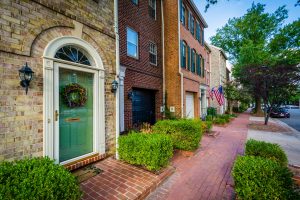 Now that the General Assembly session has ended, the VAEEC has switched its attention to several of our other priority programs, including the building code update process currently taking place here in Virginia. Southeast Energy News just had a good summary of this process that quoted VAEEC Board member Andrew Grigsby extensively.
Now that the General Assembly session has ended, the VAEEC has switched its attention to several of our other priority programs, including the building code update process currently taking place here in Virginia. Southeast Energy News just had a good summary of this process that quoted VAEEC Board member Andrew Grigsby extensively.
There are myriad important ways for you to support strong building codes in Virginia.
Public Comment Period Now Open and Webinar Available for Support
The Department of Housing and Community Development (DHCD) recently opened a public comment period seeking comment on the current draft code regulations that will run through May 26 (an extension from the original deadline of April 21).
We will be holding a members-only webinar on Thursday, April 20 at 12pm that will include:
- Update on proposals we support
- Key messaging points to consider for your comments
- Overview of VAEEC’s draft comments
- Q&A and on-the-spot feedback
Comments can be submitted through the Commonwealth’s Town Hall website.
Support Proposals in Person
On April 11th, the stakeholder workgroup, which is open to anyone to participate, will be meeting to discuss all of the energy proposals currently being considered for inclusion in the code update. Any member of the public can attend and speak in support of proposals that are being presented. We encourage anyone who is interested in this topic to attend to show your support for the following proposals* to require:
*You need to register on the DHCD website to view these and other proposals that are currently being considered.
There will also be a public hearing at the May 15th Board of Housing and Community Development meeting. The meeting will begin at 10am. We strongly encourage anyone who wishes to attend this meeting to get there early as seating is very limited.
Board Nominations Open
Finally, as we mentioned in previous communications, there will be one open seat on the Board of Housing and Community Development. We are seeking candidates who have a strong building science background and who live in congressional district one, which runs from Poquoson to Manassas (check here to see if you live in this district). If you are interested in being on the board and qualify for this seat, please email me at Chelsea@vaeec.org with your resume. We will be submitting the name(s) of our potential candidates to the administration in late spring.
VAEEC values each of our members and strives to design our programs and services in a way that best meets their needs while advancing energy efficiency throughout the Commonwealth. At the beginning of this year, we sent out a membership survey to provide all 80+ members with an easy way to voice their feedback, ideas, suggestions, and concerns.
Meetings: Length and Location
A few questions focused on our biannual meetings, which occur each year in the spring and fall. We were particularly curious if members wanted the length of these meetings to be extended and if the location should rotates throughout the state. The vast majority (80%) of survey respondents voiced that they would attend these events if they were extended to four hours, while 42% chose six hours, and 16% chose three hours. Several respondents commented that the Fall Meeting, which was three hours long, felt too rushed. (As a result, our Spring Meeting on May 19 will run 11am-3pm).
For location, 68% stated that they would attend the biannual meetings if the location rotated throughout the state. However, we received many comments stating that it would depend on the location and the length of the meeting. Several respondents suggested that the meetings stay in central Virginia (Fredericksburg, Williamsburg, Petersburg, and Charlottesville areas) in order to keep travel time at a minimum for those coming from different ends of the state.
Focus Areas
Another question focused on our members’ interest in VAEEC programmatic work. Respondents were asked to rank their interest between utility programs, building codes, benchmarking/data access, and Property Assessed Clean Energy (PACE) financing. Utility programs came in first, with building codes and benchmarking/data access at a close second and third, and PACE was ranked fourth.
When asked if there are other services that members would like their membership to include, 58% of respondents chose opportunities to present at our biannual meetings or webinar series. A member-only resource section on the website came in second at 50%, followed by more sponsorship opportunities at 8%. One comment that we found to be particularly helpful was to share the summary of the member round robins at the biannual meetings or to have a way for members to submit written report outs to share with other members. Other comments centered on legislative priorities, such as coordinating with elected officials, the Virginia Municipal League, and the Virginia Association of Counties.
Engagement
As far as VAEEC engagement goes:
- 95% of our responding members attend VAEEC events
- 79% percent read our monthly e-newsletters and other emails
- 58% visit the VAEEC website
- 47% percent of respondents participate in our webinar series and follow us on social media.
A few respondents wrote in that they also engage with VAEEC through collaboration on specific projects.
Finally, a humbling 100% of respondents voiced that they would be willing to recommend VAEEC membership to colleagues or others in the Virginia energy efficiency industry. VAEEC thrives on the participation of our members, so we are thrilled to hear that those who responded are pleased with this partnership. Here are a couple of testimonies that were shared:
“VAEEC is the place to go for ‘across-the-board’ energy expertise specific to Virginia. I know that the information that I get from VAEEC is up to date and reliable. Because the membership is comprised of the industry leaders I can trust that I am getting the best information available. And because it represents all energy-efficiency interests, VAEEC is unbiased in its information and its conclusions.”
“I believe the VAEEC draws from all sectors of the state and is attracting a group of knowledgeable, decision maker type individuals which is important to move things forward. I appreciate the opportunity to network with these individuals. In addition, I believe the VAEEC has done a great job in moving energy legislation/initiatives forward in Virginia.”
VAEEC is constantly striving to provide our members with the resources they need to succeed. If you were unable to fill out the survey, or if you have additional feedback you would like to provide, please feel free to reach out to us at any time.
If you are considering becoming a VAEEC member, you can find details on membership levels and benefits, as well as an application, here.










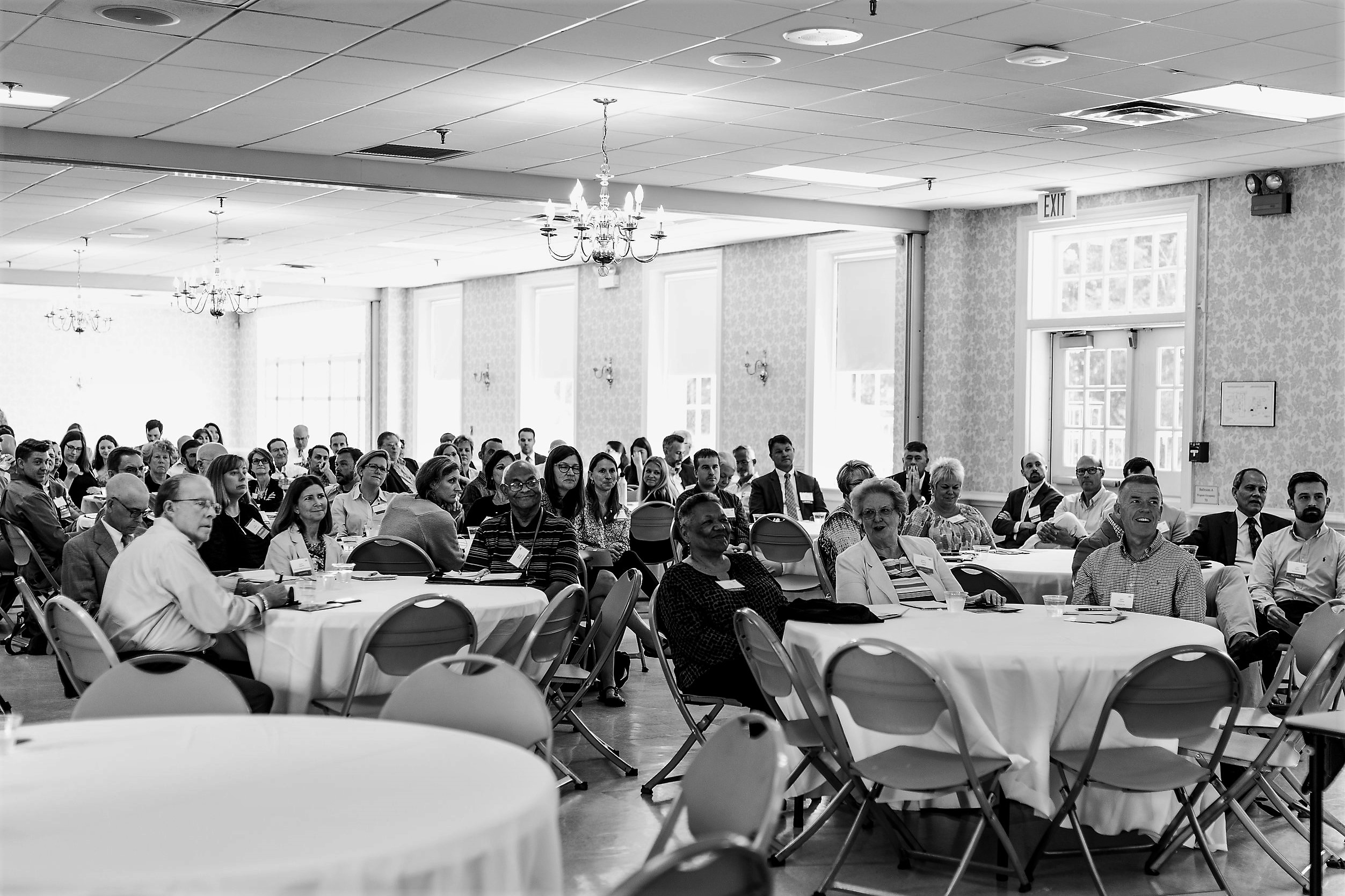
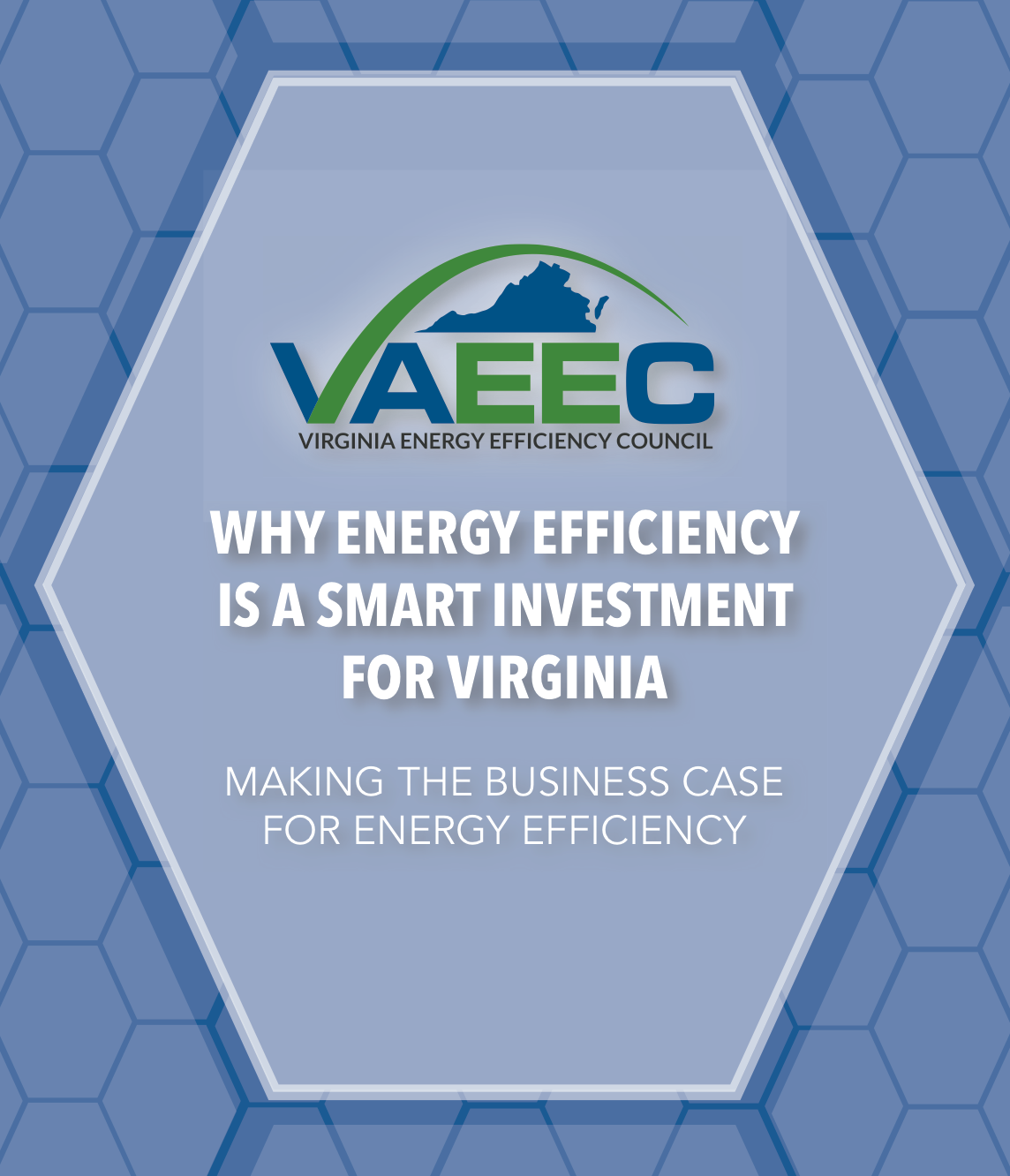

 One of their premier trainings is the CHP
One of their premier trainings is the CHP  trainers provide trainings that focus on home performance using a whole-house approach, with the goal of creating single and multifamily homes that are good for people, good for the environment, and good for business. Technicians are taught practices and techniques that test and reduce energy consumption, address health and safety concerns, and determine how the building shell, appliances, and occupants interact with one another. Detailed curricula, hands-on exercises and innovative models support these training efforts.
trainers provide trainings that focus on home performance using a whole-house approach, with the goal of creating single and multifamily homes that are good for people, good for the environment, and good for business. Technicians are taught practices and techniques that test and reduce energy consumption, address health and safety concerns, and determine how the building shell, appliances, and occupants interact with one another. Detailed curricula, hands-on exercises and innovative models support these training efforts.

 Property Assessed Clean Energy financing, or PACE, is starting to get more and more attention around the Commonwealth and the nation. In fact, Governor McAuliffe and his administration recognized PACE as a viable means to create more jobs, save energy, and lower electricity bills in a recent
Property Assessed Clean Energy financing, or PACE, is starting to get more and more attention around the Commonwealth and the nation. In fact, Governor McAuliffe and his administration recognized PACE as a viable means to create more jobs, save energy, and lower electricity bills in a recent  More than 10,000 REC members have either 175-watt mercury vapor lights or 100-watt high-pressure sodium lights at their residence or business. To help conserve energy and improve operational efficiency, when those lights need repairs REC is replacing them with energy-efficient 40-watt LED fixtures. Not only will these lights consume less energy, they require less maintenance and are dark sky friendly, allowing an unobscured view of the night sky while still providing a sense of security.
More than 10,000 REC members have either 175-watt mercury vapor lights or 100-watt high-pressure sodium lights at their residence or business. To help conserve energy and improve operational efficiency, when those lights need repairs REC is replacing them with energy-efficient 40-watt LED fixtures. Not only will these lights consume less energy, they require less maintenance and are dark sky friendly, allowing an unobscured view of the night sky while still providing a sense of security. “Consideration of the environmental impact our industry has rounds out REC’s value equation,” added Koogler. “By offering energy efficient resources to members we are helping them take part in protecting our environment. We’re in the electricity business and today that means constantly promoting energy efficiency to our members.”
“Consideration of the environmental impact our industry has rounds out REC’s value equation,” added Koogler. “By offering energy efficient resources to members we are helping them take part in protecting our environment. We’re in the electricity business and today that means constantly promoting energy efficiency to our members.” Koogler said, “Using the My Usage tool offered through REC’s MyREC SmartHub online account portal, members can log in to view this energy use data so they can identify the potential cause of spikes in energy use before they receive an unexpected high bill. They can also sign up to receive hourly or daily energy use notifications delivered by text and email.”
Koogler said, “Using the My Usage tool offered through REC’s MyREC SmartHub online account portal, members can log in to view this energy use data so they can identify the potential cause of spikes in energy use before they receive an unexpected high bill. They can also sign up to receive hourly or daily energy use notifications delivered by text and email.”
 Now that the General Assembly session has ended, the VAEEC has switched its attention to several of our other priority programs, including the building code update process currently taking place here in Virginia. Southeast Energy News just had a
Now that the General Assembly session has ended, the VAEEC has switched its attention to several of our other priority programs, including the building code update process currently taking place here in Virginia. Southeast Energy News just had a